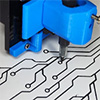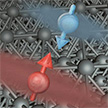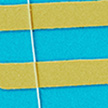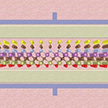Valleytronics explained
 Explore the world of valleytronics, an emerging field that holds the potential to revolutionize electronics and quantum computing by exploiting a new degree of freedom in 2D materials.
Explore the world of valleytronics, an emerging field that holds the potential to revolutionize electronics and quantum computing by exploiting a new degree of freedom in 2D materials.

 Subscribe to our Nanotechnology Spotlight feed
Subscribe to our Nanotechnology Spotlight feed
 Explore the world of valleytronics, an emerging field that holds the potential to revolutionize electronics and quantum computing by exploiting a new degree of freedom in 2D materials.
Explore the world of valleytronics, an emerging field that holds the potential to revolutionize electronics and quantum computing by exploiting a new degree of freedom in 2D materials.
 This review provides insights into current challenges and future directions for developing multifunctional hydrogel-based flexible electronics, which can enhance the performance and scope of applications in this emerging field.
This review provides insights into current challenges and future directions for developing multifunctional hydrogel-based flexible electronics, which can enhance the performance and scope of applications in this emerging field.
 Researchers have developed a low-cost and simple method for printing electronics using regular pens and a benchtop plotter. This technique allows for the use of virtually any solution-processable nanomaterial ink without the need for expensive equipment or ink optimization, making printed electronics more accessible.
Researchers have developed a low-cost and simple method for printing electronics using regular pens and a benchtop plotter. This technique allows for the use of virtually any solution-processable nanomaterial ink without the need for expensive equipment or ink optimization, making printed electronics more accessible.
 Researchers have made significant strides in developing photodetectors made with tungsten disulfide (WS2) on paper substrates for disposable electronics. This research, which addresses the growing issue of electronic waste, has yielded promising results with WS2 photodetectors on paper substrates reaching photo responses comparable to commercially available silicon photodetectors. The findings have significant implications for ubiquitous electronics and low-performance sensing applications.
Researchers have made significant strides in developing photodetectors made with tungsten disulfide (WS2) on paper substrates for disposable electronics. This research, which addresses the growing issue of electronic waste, has yielded promising results with WS2 photodetectors on paper substrates reaching photo responses comparable to commercially available silicon photodetectors. The findings have significant implications for ubiquitous electronics and low-performance sensing applications.
 Neuromorphic engineering is focused on developing computer hardware and software systems that mimic the structure, function, and behavior of the human brain. The goal of neuromorphic engineering is to create computing systems that are much more energy-efficient, scalable, and adaptive than conventional computer systems, and that can solve complex problems in a manner that is similar to how the brain solves problems. Neuromorphic computing is a specific application of neuromorphic engineering. It involves the use of hardware and software systems that are designed to process information in a manner that is similar to how the human brain processes information.
Neuromorphic engineering is focused on developing computer hardware and software systems that mimic the structure, function, and behavior of the human brain. The goal of neuromorphic engineering is to create computing systems that are much more energy-efficient, scalable, and adaptive than conventional computer systems, and that can solve complex problems in a manner that is similar to how the brain solves problems. Neuromorphic computing is a specific application of neuromorphic engineering. It involves the use of hardware and software systems that are designed to process information in a manner that is similar to how the human brain processes information.
 Spintronics is a technology that utilizes the spin of electrons - in addition to their charge - in order to store and process information. Unlike traditional electronics, which rely on the movement of electrons to perform their functions, spintronics uses the intrinsic angular momentum of electrons to achieve the same results. Spintronics offers the potential to address some limitations of traditional, charge-based computing and it has the potential for developing new types of devices such as spin-based transistors and logic gates.
Spintronics is a technology that utilizes the spin of electrons - in addition to their charge - in order to store and process information. Unlike traditional electronics, which rely on the movement of electrons to perform their functions, spintronics uses the intrinsic angular momentum of electrons to achieve the same results. Spintronics offers the potential to address some limitations of traditional, charge-based computing and it has the potential for developing new types of devices such as spin-based transistors and logic gates.
 Recent investigations suggest that topological semimetals reveal unique properties that can enable unprecedented functionalities for future electronics. New research results shed light on the specifics of electron transport in quasi-one-dimensional topological Weyl semimetals and can be important for their proposed applications as downscaled interconnects. The results obtained in this work can be used for developing assessment methodologies for the reliability of topological semimetals.
Recent investigations suggest that topological semimetals reveal unique properties that can enable unprecedented functionalities for future electronics. New research results shed light on the specifics of electron transport in quasi-one-dimensional topological Weyl semimetals and can be important for their proposed applications as downscaled interconnects. The results obtained in this work can be used for developing assessment methodologies for the reliability of topological semimetals.
 Researchers show how MXenes' rich chemistry can be used to create doping-free 2D transistors with intrinsically low resistive contacts while maintaining balance mode operation. With a suitable functional termination, MXenes can become a semiconductor or a metal with a different work function. The researchers exploit this unique property of MXene to propose a Schottky barrier transistor, which can be implemented with a bare MXene by converting it to a semiconductor in the channel region with strategic functionalization.
Researchers show how MXenes' rich chemistry can be used to create doping-free 2D transistors with intrinsically low resistive contacts while maintaining balance mode operation. With a suitable functional termination, MXenes can become a semiconductor or a metal with a different work function. The researchers exploit this unique property of MXene to propose a Schottky barrier transistor, which can be implemented with a bare MXene by converting it to a semiconductor in the channel region with strategic functionalization.